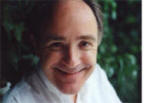They were combined with a dormant book on the Montmartre. A contract was drawn up with a university, including an accompanying CD. Back at old premises at Dortheavej the music was outlined. Alas, I was made redundant by co-editors. The story of the Montmartre should not be told through the people who created, ran, worked or played at the place, but by a librarian already on the university payroll. In this situation KEK offered some experienced advice on the ups and downs.
At the start of the new century KEK and I spent a fine afternoon and evening seated together at the founding of the Danish Rock Academy. The music interests of KEK went back to early New Orleans and even further back to the African roots (he recorded the Ghana High Life Band in 1959) and then forward. I think that was what we had in common: An insatiable love for all kinds of rhythmic music independent of categories as jazz, blues, folk, beat, gospel, soul or whatever.
My last connection with Karl Emil Knudsen before his death was an e-mail. He concluded his message with these words: “The jazz business is tough and small and we crawl along with difficulty”.
Jan Søttrup 2008
 Jan Søttrup
Born 1948
My first connection to Karl Emil Knudsen was indirect. I was born in the
north of Denmark 1948 and had during my first years a nanny called Aase.
She left the provinces for Copenhagen. Soon my family followed suit.
Every so often Aase would came and tell about a family for whom she had
become a nurse – the busy Dyrup family, who held late night meetings in
the kitchen with a friend and partner, Karl Emil Knudsen, on running a
jazz club and a record company. To my ears their New Orleans jazz
sounded exciting.
Jan Søttrup
Born 1948
My first connection to Karl Emil Knudsen was indirect. I was born in the
north of Denmark 1948 and had during my first years a nanny called Aase.
She left the provinces for Copenhagen. Soon my family followed suit.
Every so often Aase would came and tell about a family for whom she had
become a nurse – the busy Dyrup family, who held late night meetings in
the kitchen with a friend and partner, Karl Emil Knudsen, on running a
jazz club and a record company. To my ears their New Orleans jazz
sounded exciting.
At 15 I experienced The New York Contemporary Five at The Montmartre. It was rumored that this combo had been recorded by Sonet / Storyville, but for some reason the album was postponed. I started phoning up the record company to ask for a release date. Mr. Knudsen told me to be patient, and eventually the album arrived with a solid cardboard cover and some adventurous music inside.
During high school years I promoted concerts, beginning with folksinger Rich St. John, later Poul Dissing and Beefeaters. Their manager Walter Klæbel said: “Call on Karl Emil and ask for some PR”. The leaflets, from the office in an industrial area at Dortheavej, were printed on heavy grey paper with an impressive old fashioned design. In later years I mentioned them to KEK, who wondered why I remembered the look so well. “Because I kept the leaflets and still admire them every now and then”. A happy twinkle in his eyes showed that the money spent on this promotion had been justified.
As a record and concert reviewer from 1968 onwards it became my habit to look up the record companies, who had gathered in the suburb Vanlose. At Sonet / Storyville one would run into a young Poul Bruun, who was doing this and that, including lay out of record covers, before going on to become the godfather of Danish rock. Karl Emil Knudsen clearly had the knack of finding the right people. Poul Bach and Calle Sand, Kurt Andreasen, Jytte Kjærgaard. Others I already knew through their work as knowledgeable salesmen in record shops, Lars Rich and Kent Munch. Even seasoned entrepreneurs like Anders Stefansen and Peter Abrahamsen had been toddlers in KEK’s play pen.
I progressed to the radio being a DJ and at television as a producer and director. By the early 80’s the Sonet / Storyville organization had, with grand offices in centre, grown into the most important representative of all kinds of music, some of it a bit difficult to program. It was possible, though, to place examples of the more exotic stuff as background or themes in television productions. Through this cooperation a large audience was unknowingly introduced to the music of Brian Eno, Tangerine Dream, Mike Oldfiend, Sly Dunbar & Robbie Shakespeare, Defunkt, Spillemandslauget Tramp and singer/songwriter Niels Skousen.
From the middle 1990’s I began realizing a project to uncover the myths around the Montmartre doing interviews with the circle of people around that legendary place. Through our many conversations during the research KEK took on the role as a mentor, but declined to be interviewed – knowing full well that he would play a large part in the recollections of others. Many interviews were realized and just as many planned.